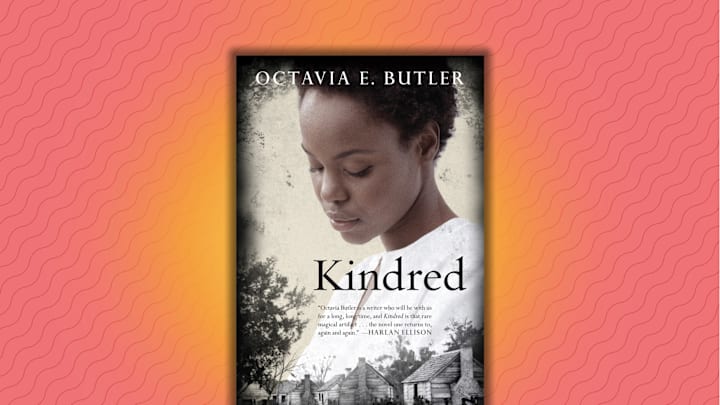While working as a writer, Octavia Butler famously wrote herself the motivational note: “I am a Bestselling Writer. I write Bestselling Books … So Be It! See To It.” Her vision came true with the success of Kindred. The book follows Dana, a 26-year-old Black woman from California who travels back in time to an Antebellum plantation in Maryland. There, she meets the white enslaver destined to become her great-great-great-grandfather. In order to ensure her existence, Dana continues to jump between the present and the past, saving her ancestor’s life numerous times while enduring abuse. Butler wrote numerous speculative fiction classics before her death in 2006, but her 1979 novel remains her best-known work. Here are some facts about Kindred, as seen in Mental Floss's book The Curious Reader.
1. Kindred is not science fiction.
Butler is one of the most esteemed science fiction authors of the 20th century, known for her high-concept series set in the future. But while it does include time travel, Kindred doesn’t fall under the science fiction genre, according to Butler. When her fellow novelist Walter Mosley once asked her why, she replied, as Mosley tells it: “There’s no science in it!” She instead categorized her most famous work as a “grim fantasy.” Critics have also placed it under the labels of neo-slave narrative and psychological horror.
2. Butler wanted to defend the integrity of enslaved people.
Butler wrote Kindred in response to statements she heard from Black college students in the 1960s and ‘70s. In the Black Power era, it had become popular for some young people to look down on their enslaved ancestors and insist they would have never put up with the same mistreatment. Kindred shows how Butler felt about this narrative. In the book, the violence Dana faces in the Antebellum South is brutal and often inescapable. In order to ensure the existence of her future self, she must endure abuse from her white enslaver ancestor and help him survive. The story shows that surviving slavery—and all the sacrifices that required—was an act of bravery on its own. Butler said in an interview with Publishers Weekly, “I wanted to write a novel that would make others feel the history: the pain and fear that Black people have had to live through in order to endure.”
3. The advance was just enough to live on.

Speculative fiction was a white-, male-dominated field in the 1970s, and Butler struggled to find a publisher for a time travel book that dealt with slavery. When she finally sold Kindred, she received an advance of $5000. Her writing was her only source of income at the time, and she got by on meals of beans and potatoes.
4. Kindred almost had a male protagonist.
In the early stages of her work on Kindred, Butler imagined the main character who is sent back in time as a man. It didn’t take her long, however, to run into logistical problems. “So many things that he did would have been likely to get him killed,” she told Charles Rowell in an interview. “He wouldn’t even have time to learn the rule—the rules of submission, I guess you could call them—before he was killed for not knowing them because he would be perceived as dangerous.” Rather than writing a male character whose modern attitude would be a liability in the past, she made the character seem less threatening by switching the gender.
5. Butler toned down the violence.
The horrors of slavery are on full display in Kindred, and they’re central to the book’s themes. It may then come as a surprise to some readers that Butler held back when depicting the harsh realities of the pre-Civil War South. By writing a more realistic portrayal of slavery (and therefore a more violent one), Butler feared the book would lack mainstream appeal. She instead found a way to tone down the more brutal passages without losing the book’s message.
6. Butler visited Mount Vernon for research.
The slavery portions of Kindred are set in Maryland, and for her research, Butler took a Greyhound bus to the Mid-Atlantic. There, she toured Mount Vernon, the former Virginia home and plantation of George Washington. “They had not restored or rebuilt any slave cabins. And they never said the word ‘slave,’” she told Index Magazine. “They said ‘servant.’ So there was obviously a game going on. But I could still get the idea.” After coming home from her research trip, she posted a plan of the plantation on her wall so she could reference it as she wrote.
7. Kindred is Butler's best-selling book.
Her best-selling work, Kindred is still widely read today. It’s become a staple of many school reading curriculums and a popular choice for book clubs and community reading initiatives. Since its release in 1979, it has sold over a million copies and been adapted into an acclaimed graphic novel. In early 2022, a television series based on the book was ordered at FX.
